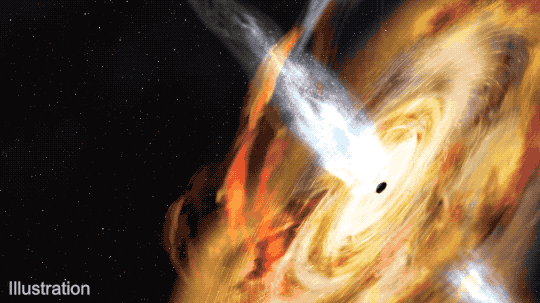Black holes are one of the most fascinating and mysterious objects in the universe. They are formed when massive stars collapse under the force of their own gravity, creating an area of space where the gravitational pull is so strong that nothing can escape, not even light. Despite their intrigue, black holes also pose a significant threat to the Earth and the rest of the universe.
The concept of a black hole was first theorized by Albert Einstein's theory of relativity in 1915. However, it was not until the late 1960s that astronomers discovered evidence of their existence. Since then, the study of black holes has been a major area of research in astrophysics, and scientists have made significant strides in understanding their nature.
Black holes can be classified into three types, based on their size: stellar, intermediate, and supermassive. Stellar black holes are the smallest and most common type, with masses up to 20 times that of the sun. Intermediate black holes are more massive, ranging from 20 to 100,000 times the mass of the sun. Finally, supermassive black holes are the largest and can have masses of millions or even billions of times that of the sun.
One of the primary threats posed by black holes is their ability to disrupt and destroy celestial bodies. When a black hole comes into contact with a star or planet, the gravitational pull of the black hole can tear the object apart, creating an effect known as spaghettification. This phenomenon occurs because the gravitational force at the point closest to the black hole is much stronger than the force at the farthest point, causing the object to be stretched and torn apart.
Another danger posed by black holes is their ability to consume matter. As matter falls into a black hole, it heats up and emits high-energy radiation, which can be dangerous to anything in its path. This radiation can also cause damage to the Earth's ozone layer, leading to increased UV radiation and potential harm to living organisms.
Despite these potential threats, the likelihood of a black hole causing harm to the Earth is relatively low. Most black holes are located far from our solar system, and even if one were to pass through our galaxy, the odds of it coming into contact with the Earth or any other planet are incredibly small. However, the study of black holes is important not just for their potential threat but also for what they can tell us about the nature of the universe.
In conclusion, black holes are one of the most fascinating and mysterious objects in the universe, and while they do pose a threat to the Earth and the rest of the universe, the likelihood of them causing harm is relatively low. Despite this, the study of black holes is essential for our understanding of the universe and our place within it

